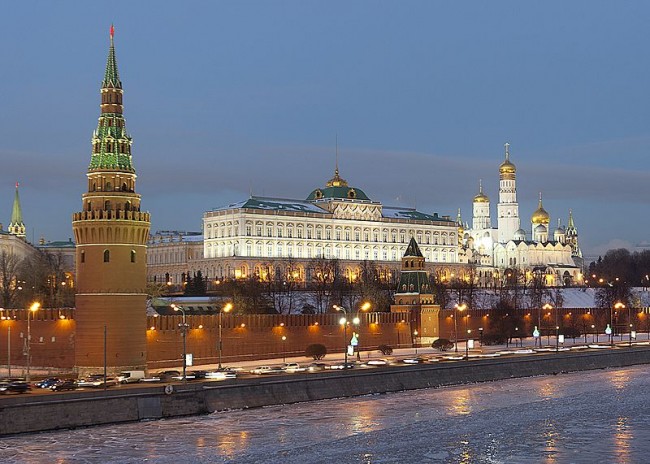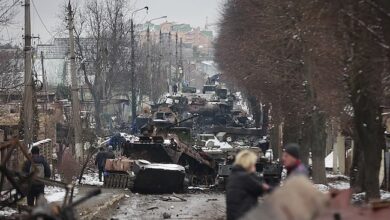
By S. Sadia Kazmi
The fifth Russian-hosted Afghanistan peace conference was recently held on 14th April 2017. For the first time, the trilateral peace efforts by Russia, China, and Pakistan expanded to include more states. Even though the US did not participate, the event was attended by 11 countries including Russia, China, Pakistan, Afghanistan, India, Iran, Kazakhstan, Kyrgyzstan, Tajikistan, Turkmenistan and Uzbekistan. The main agenda was to deliberate upon and discuss the ways to bring peace to Afghanistan. Not only does this new round of international talks feature a broader scope of regional players than before, it also is reflective of increased diplomatic efforts to find ways for reconciliation in the war torn Afghanistan. Going a little back in time one could recall that the Afghan peace efforts were initiated by Pakistan, China, and Russia in April 2013. While these three countries were always mindful of the importance of diplomatic solution to the Afghan problem, the fact that more representation from other countries was needed to find a consolidated solution never escaped their sight. Although this happened only in the fifth year of peace process, it is nonetheless appreciable. Another worth noticing dimension is that ever since its retreat from Afghanistan in 1989, Russia has mostly exercised caution in its policy with this country and remained almost missing from the political scene in this part of the region. It was only recently that Moscow formally revived the trilateral efforts last year after a gap of three years when the first two meetings were held in April and November in Beijing and Islamabad respectively. While the main purpose is to bring about peace in Afghanistan and in the region, at many occasions these peace efforts have been seen skeptically by the Afghan government as well as by the US. Some reasons have been mentioned occasionally for this lack of trust and most of the time it is the “Russian Factor” which usually comes under criticism. Afghan government rebukes the growing contact between Moscow and the Taliban stating that the anti-state elements are being supported, backed, and strengthened by Russia hence the motives behind these efforts are highly questionable. Similarly, the US on the other hand is keeping a close watch on the Russian involvement and interest in the region and assumes that the American-led efforts in Afghanistan are being hijacked by Russia. Similarly Pakistan has also been seen with suspicion for having close contact with Taliban. In these conditions it wouldn’t be too wrong to say that the distrust and skepticism remain the biggest challenge to any peace efforts in Afghanistan.
Although Afghan government was initially quite critical of Russian motives, but later Afghan Foreign Minister Salahuddin Rabbani clarified that Afghan government accepts and believes Russian assurance about contacting Taliban only to urge them to join the peace process. Hence the display of understanding from Afghan side merits appreciation for it did not opt out of the peace process. However, there wasn’t any representation from Taliban despite them being the main actor in Afghanistan. It is important that any efforts towards bringing peace in Afghanistan should include Taliban as well if it is to be made a successful peace process. Leaving out Taliban will only address half the concerns. It is also being speculated that the Daesh/ISIS might have reached an understanding and forged hands with Taliban. Whether that is true or not, the possibility just can’t be ruled out. This provides another reason as to why Taliban should be made part of the peace process. The very agenda of these peace efforts is to keep the spread of ISIS in Afghanistan to Central Asian states and from there on to other states. Only an all inclusive effort with all the stakeholders as part of the peace process will provide some hope to bring peace in Afghanistan.
Same applies to the stance taken by the US. The boycott of Russian led endeavor is only going to highlight the self centered interest of the US. If both Russia and the US are in favor of the same end result in Afghanistan i.e. to bringing peace in Afghanistan, then there is a need to understand that only a combined effort will bear the desired result. Dropping a MOAB on a 95,000 population district just few hours before Afghanistan Peace Conference in Moscow only proves that the US disregards the option of talks about Afghan Peace and instead is resorting to using power to eliminate Daesh. At the same time it also reflects on the fact that the US doesn’t want to be part of any setting that has Russia in the lead role. By deciding not to join the peace process, the US has underscored the trend of icy relations with Russia. It shows that marginalizing Russia is more important for the US than putting in combined efforts for peace. US branded it as a “unilateral Russian attempt to assert influence in the region”. US needs to keep in mind that for any initiative to be “constructive” it should be seen with less skepticism and be given some chance to deliver especially when all the other countries joined in the peace process. This dimension should not be ignored and the US should avoid its stubborn stance vis a vis Russia.
The participant states have reiterated their support for peace in Afghanistan through peaceful means. They have also urged Afghan government to be supportive towards the efforts. Along with that the Taliban have been offered to forego military solution in favor of talks on the issue of reconciliation. Over all the major emphasis has been put on collectively addressing a more imminent threat i.e. the spread of ISIS terrorist group. Although it looks like the US under Trump administration is still working to draft a policy vis a vis Afghanistan, the facts show that there rather has been continuity of the same policy as that of Obama. However one can expect slight change in the form of increase in the number of troops. There could also be more MOABs dropped in the future. The rest of the plan for Afghanistan regarding training, advising, assisting, and calling for reconciliation remains the same as that of Obama administration. Whatever the method US adopts, it is imperative to not see it only as “Russian affair” and instead be supportive towards the regional approaches at reconciliation and counterterrorism in the country. Last but not the least, it could be anyone’s guess that peace in Afghanistan cannot be brought about through military force but a long term sustainable peace would be a possibility only through peaceful means of talks and negotiations with all the stakeholders as part of the process.




